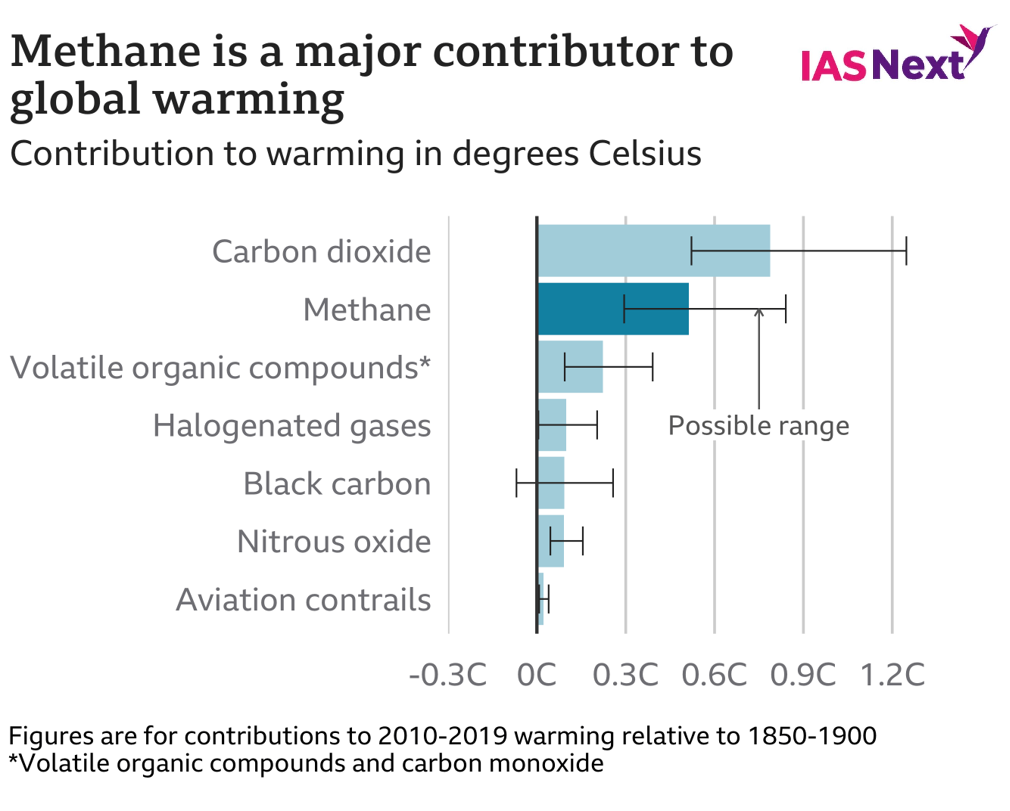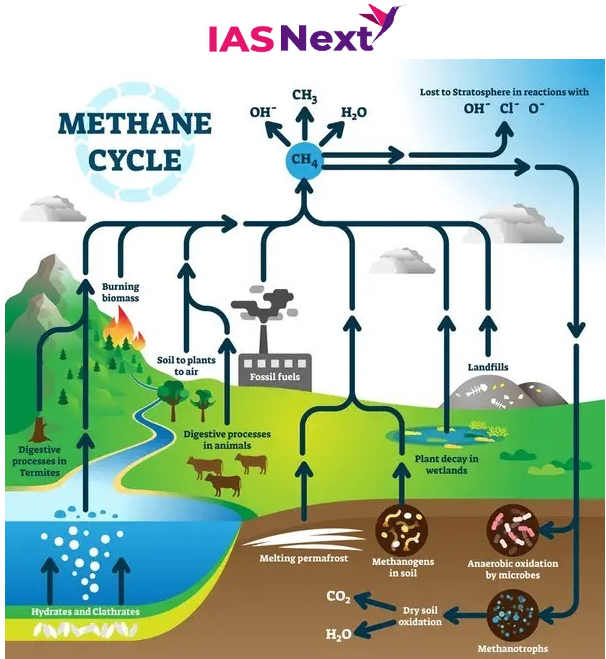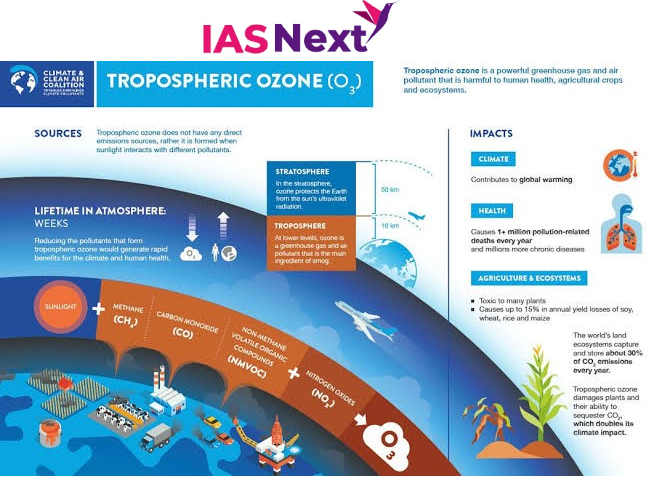CURRENT AFFAIRS
Get the most updated and recent current affair content on Padhaikaro.com
What is the Global Methane Pledge?
- IAS NEXT, Lucknow
- 09, Nov 2021

Reference News:
The Global Methane Pledge was launched at the UN COP26 climate conference in Glasgow.
- It is an effort led jointly by the United States and the European Union.
- So far, over 90 countries have signed this pledge.
About the Global Methane Pledge:
- The pledge was first announced in September by the US and EU, and is essentially an agreement to reduce global methane emissions.
- One of the central aims of this agreement is to cut down methane emissions by up to 30 per cent from 2020 levels by the year 2030.

Need for limiting the methane emissions:
- Methane is the second-most abundant greenhouse gas in the atmosphere, after carbon dioxide, and, therefore, pledges related to cutting down its emissions are significant.
- According to the latest Intergovernmental Panel on Climate Change report, methane accounts for about half of the 1.0 degrees Celsius net rise in global average temperature since the pre-industrial era.
- Rapidly reducing methane emissions is complementary to action on carbon dioxide and other greenhouse gases, and is regarded as the single most effective strategy to reduce global warming in the near term and keep the goal of limiting warming to 1.5 degrees Celsius within reach.
Why is dealing with methane important for climate change?
- According to the International Energy Agency (IEA), while methane has a much shorter atmospheric lifetime (12 years as compared to centuries for CO2), it is a much more potent greenhouse gas simply because it absorbs more energy while it is in the atmosphere.
- In its factsheet on methane, the UN notes that methane is a powerful pollutant and has a global warming potential that is 80 times greater than carbon dioxide, about 20 years after it has been released into the atmosphere.
- Significantly, the average methane leak rate of 2.3 per cent “erodes much of the climate advantage gas has over coal”.
- The IEA has also said that more than 75 per cent of methane emissions can be mitigated with the technology that exists today, and that up to 40 per cent of this can be done at no additional costs.

Sources of human-caused methane emissions:
- Most human-caused methane emissions came from three sectors: Fossil fuels, waste and agriculture.
- Oil and gas extraction, processing and distribution accounted for 23 per cent of methane emissions in the fossil fuel sector. Coal mining accounted for 12 per cent of emissions.
- Landfills and wastewater made up about 20 per cent of emissions in the waste sector. In the agricultural sector, livestock emissions from manure and enteric fermentation constituted for roughly 32 per cent and rice cultivation eight per cent of emissions.
Mitigation potential varied between countries and regions:
- Europe had the greatest potential to curb methane emissions from farming, fossil fuel operations and waste management.
- India had the greatest potential to reduce methane emissions in the waste sector. China’s mitigation potential was best in coal production and livestock, while Africa’s was in livestock, followed by oil and gas.
- The fossil fuel industry had the greatest potential for low-cost methane cuts.
Suggestions:
- Human-caused methane emissions must be cut by 45 per cent to avoid the worst effects of climate change.
- Such a cut would prevent a rise in global warming by up to 0.3 degrees Celsius by 2045.
- It would also prevent 260,000 premature deaths, 775,000 asthma-related hospital visits annually, as well as 25 million tonnes of crop losses.
Three behavioural changes — reducing food waste and loss, improving livestock management and adopting healthy diets (vegetarian or with a lower meat and dairy content) — could reduce methane emissions by 65–80 million tonnes per year over the next few decades.